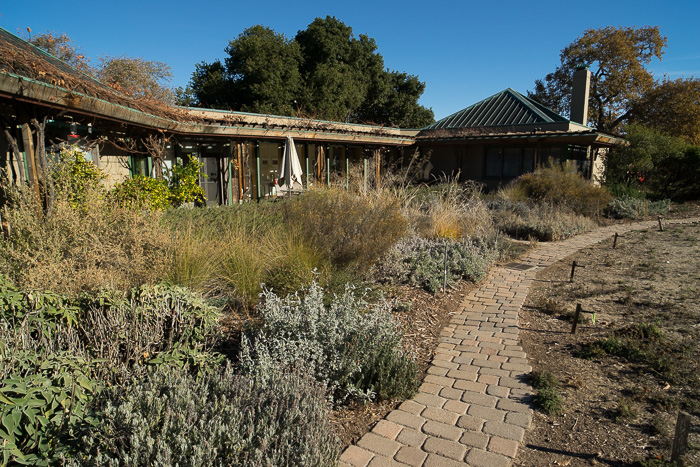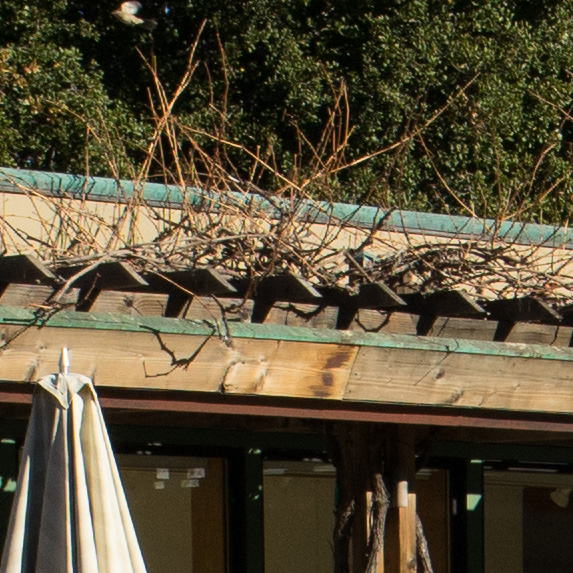Like Bo Diddley said, “You can’t judge a book…” The little Leica 24mm Elmar looks like it would be a perfect match for the half-pint Sony a7R, but it has dark corners, corner color shifts, and corner smearing. The hulking Zeiss 21mm f/2.8 Distagon ZF.2 looks comical on the Sony body. The lens is so heavy, and the body so small that holding them steady is tricky. But the combination really sings.
For this lens on this camera, I use a technique that I learned from watching a documentary about Pete Souza, the current White House photographer. When using lenses like a 24-70 zoom on a Canon body, he puts the heel of his left hand under the base of the camera, palm up. Then he extends his fingers so that they support the lens hood. It gives a nice, stable, two-point platform for the camera that mitigates against up and down wobbles. It works really well for me with the a7R/21mm Zeiss combination.
I’ve had this lens for quite some time, but it never has gotten much use. It’s hard to focus through the viewfinder of a D4 or D800E, and it’s sharp enough that, especially on the D800E, it’s pretty unforgiving of focus errors despite its short focal length. I’ve only used it seriously with the D800E on a tripod with live view, and, what with the subsampling, live view on the D800E is pretty unsatisfying, although it gets the job done.
So I was anxious to see if the lens would do well on the little Sony, which has a great live view implementation that works with the EVF.
I set up on the usual scene:
I made exposures at the whole stops from f/2.8 through f/22, focusing wide open on the grape vines near the center in one series, and the tree branches near the chimney cap in the upper right corner in another series. Focusing near the center provided the same quality at the corner, so I’m just going to analyze that series.
Since one series is fourteen images, I’m not going to try your patience by posting all the images as JPEGs. I’ll show you a few, and at the end of this post there will be links to Photoshop files containing all the images as labeled layers.
My comments:
- There is a lot of light falloff towards the corners at f/2.8, but no more than on a D800E. F/4 is markedly better, and there is a very slight improvement at f/5.6. The rest of the series looks the same in that regard.
- I don’t notice any color shift towards the corners at any aperture, although it would be hard to see on this subject matter.
- In the center, f/2.8 is not wonderfully sharp. f/4 is distinctly better, and f/5.6 is a smaller step up. f/8 is about the same – maybe a shade better. f/11 is slightly worse than f/8 due to diffraction. f/16 is a little softer than f/5.6, and f/22 is as soft as f/2.8.
- The center performance at the middle apertures is great, easily matching the resolution of the Sony sensor, and maybe going quite a bit farther.
- In the upper right corner, f/8 and f/11 deliver the best performance, and it is quite good. f/16 and f/5.6 are a step down, with f/16 winning by a nose. f/4 is slightly sharper than f/22 and f/2.8, which are about the same.
- I can find little chromatic aberration at any aperture (you can see some on the corner image below).
Here’s the center at f/8, 1:1:
And the upper right corner at the same f-stop, also at 1:1:
Here’s a link to the Photoshop file with all the center images.
Here’s a link to the Photoshop file with all the corner images.
This is a really nice combination.
However, this is not a good lens for sun stars. The diaphragm blades are quite smooth, so you don’t get decent spike until f/22, where diffraction softens the whole image a lot. In addition, the lens is prone to big ugly blobs of flare with the sun in the periphery of the image.



Kee Woo Rhee says
Very nice review. I happened to have this wonderful Zeiss 21mm ZF.2, as well as 35mm & 135mm APO ZF.2, and I am very keen to use these lenses on my newly acquired SONY A7R.
I would like to know what kind of adapter I should have. Please recommend the very best one for me.
Thanks,
Kee
Jim says
My favorite adapters are made by Kipon.
Marcin says
Hi
I have 2 Zeiss lenses (21mm Distagon and 100mm Makro Planar) with Nikon mount but… it’s really difficult to me to focus (especially with 21mm Distagon) so I’m gonna buy A7RII but…
I read some posts in internet that adapters cause image quality loss (micro misalligning). What do You think- is it worth to buy Sony for these great lenses?
Jim says
Lack of co-parallelism (front and back flanges being parallel) in adapters is occasionally a problem for lens testers, but not often for people making real pictures. If results is that the focus plane isn’t perfectly perpendicular to the lens axis. But how often are you making images in which what you want in focus obeys those rules? Lenses have field curvature as well. I’d say, go for it. My favorite adapters are the Kipon ones, because they’re the right length, but with one or two out of many many lenses, I’ve found they don’t let me achieve infinity focus.
Jim
Marcin says
Thank You for the answer 🙂 I decided to buy A7R II after I read this 🙂
Marcin says
Hi.
I bought A7RII and this is really great camera. I use Commlite adapter and with Zeiss 100 Makro Planar it’s ok but with Distagon 21mm/2.8 I cannot reach infinity…It’s really close but not in focus ( to make a sharp picture I have to close aperture)… Do You have a sharp pic at infinity with Your adapter?
Jim says
I’ve found one adapter that didn’t allow infinity focus with one of my WA lenses. If you want an adapter that’s guaranteed to allow infinity focus, get one of the Novoflex ones. They are shorter than the flange difference by design.
Jim
Marcin says
Thanks for the advice. I’ll try it 🙂